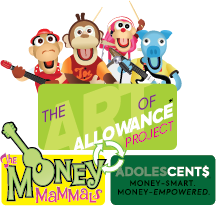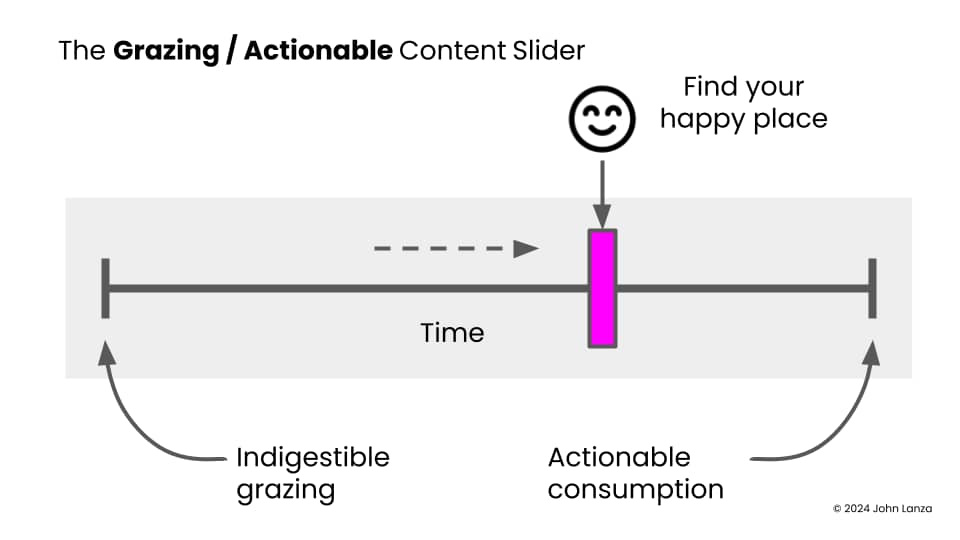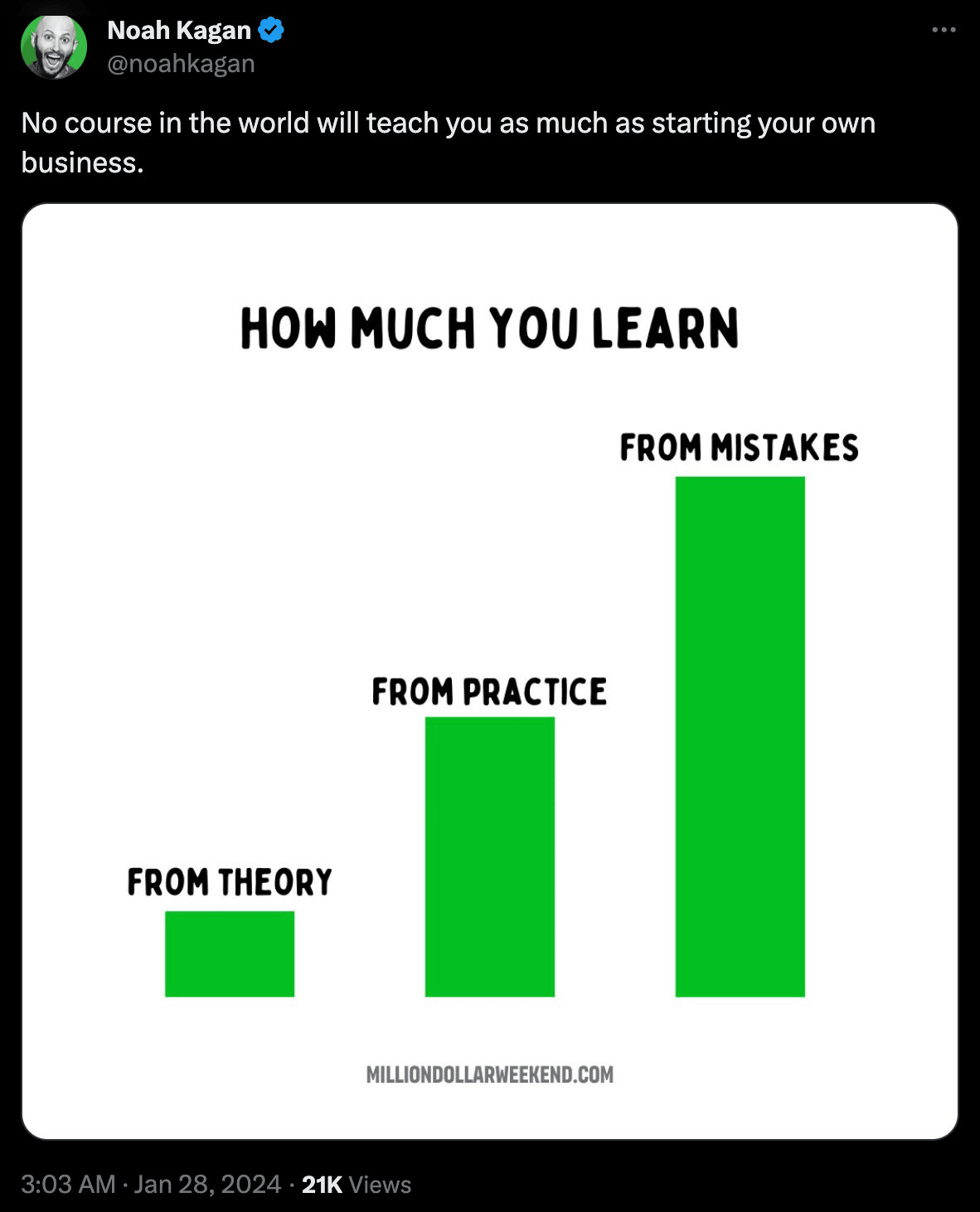|
In this issue: Stop grazing on content, the problem with stock market simulations for our kids and the importance of learning from mistakes. “Working to help parents raise money-smart kids.” 3 Ideas to Share & Save Hello, friends! Prism’s newsletter introduced me to the information-action ratio, a useful concept in an overstimulated world. I think many of us would agree that we want to avoid situations in which we “just passively graze on it [information] like cattle before defecating it undigested.” Subscribing to YouTube channels with consistently top-notch content has helped me improve this ratio. For instance, my wife and I watched a Wendover video last night about how our incredibly complex grocery store system delivers fresh seasonal produce, such as grapes, throughout the year. (Hint: It gets sourced from different locations around the globe at different times.) I get that logistics videos might not float your boat. And while we can benefit from less mindful, more relaxing content (We rewatched Anchorman a few weeks ago. 😅), moving our sliders away from indigestible grazing and toward actionable consumption is useful.
Which brings us to this week’s “3 Ideas to Share & Save”! — 1 — The Wrong Message? In this YouTube short, investing expert Will Rainey and I discuss the potential pitfalls of stock market games and simulations: As is typical with my podcast guests, Will and I go into a bit more depth during our full conversation. (Jump to 12:15 for more on this topic.) The takeaway here is that even though these games and simulations are almost always well-intentioned, they are sending the wrong message to our kids. While making something a game might be fun, doing so doesn’t mean the information-action value is increasing. In fact, the opposite may be occurring. Will lays out key messages for kids to understand when it comes to investing in his book, Grandpa’s Fortune Fable$, which I mentioned to you in this issue. Here are his three rules for wealth: 👉🏻 “Keep One Out of Every Ten Seeds You Receive” (Save) So while we want our kids to learn how stocks work, doing so in a short-term simulation violates the most important rule of building wealth: patience. And if the ultimate goal of money learning isn’t the acquisition of knowledge for knowledge’s sake, but rather developing good behaviors, we might be wise to be wary of these seemingly innocent games. Speaking of how effective learning happens… — 2 — Low-Stakes Mistakes: I stumbled upon this tweet from tech entrepreneur Noah Kagan.
While Kagan is using this post to sell his business-building program, “Million Dollar Weekend,” he is clearly communicating a key part of our mission. The Art of Allowance Project is built upon the idea that practice and experience matter. A lot. We give our kids an allowance from a young age so they can pocket personal experiences with money early. Allowing our kids to make mistakes when they’re young, so-called “low-stakes mistakes,” is important. And there’s research to support this youth-first, experience-based approach. Please listen to my conversation with Ashley LeBaron for more details. (Incidentally, you can actually improve your own information-action ratio on Twitter by following as many high-value content creators as you can. 😉) — 3 — Reframing Problems: Psychotherapist Bruce Tift says he no longer has any problems in his marriage because he doesn’t define “emotional disturbances” as “problems.” (Hat tip to Four Thousand Weeks author Oliver Burkeman for turning me on to Tift’s perspective in the Waking Up app.) Clearly, reframing is a powerful concept. By reframing the way he thinks about problems, Tift changed the perspective through which he views his relationship with his wife. Similarly, we can use reframing to make our kids’ money-smart journeys more productive. (For us and for them.) I don’t know about you, but I’ve been guilty of patting myself on the back when one of my kids shows consistently money-smart behavior. (For example, socking away summer work money to prepare for college expenses.) I’ll tell myself, “Good job, dad. You’re really making a difference.” The journey to money empowerment, though, is littered with ruts in the road. Sometimes, rather than a congratulatory pat on the back, I feel like giving myself a swift kick in the rear. Instead, reframing money behavior “problems” as “opportunities for learning” is much more productive. For the kid who’s not a “natural” saver, you might need to offer an incentive, like matching the amount dollar for dollar. Or make sure the money goes into a less liquid account, like a Roth IRA. And while you might crow about your child who just made a donation to a local animal charity, you may need to lead the way for the kid who isn’t so magnanimous by modeling charitable giving or doing. Speaking of modeling, reframing also helps us model problem-solving for our kids. Or maybe I should reframe it as “opportunity-making.” 😂 Whatever you or I decide to call it, let’s make sure we enjoy the journey! John, P.S. Please consult with a financial or investment professional before engaging in any decisions that might affect your own financial well-being. View this email in your browser. Forwarded this email? Sign up here.
|




